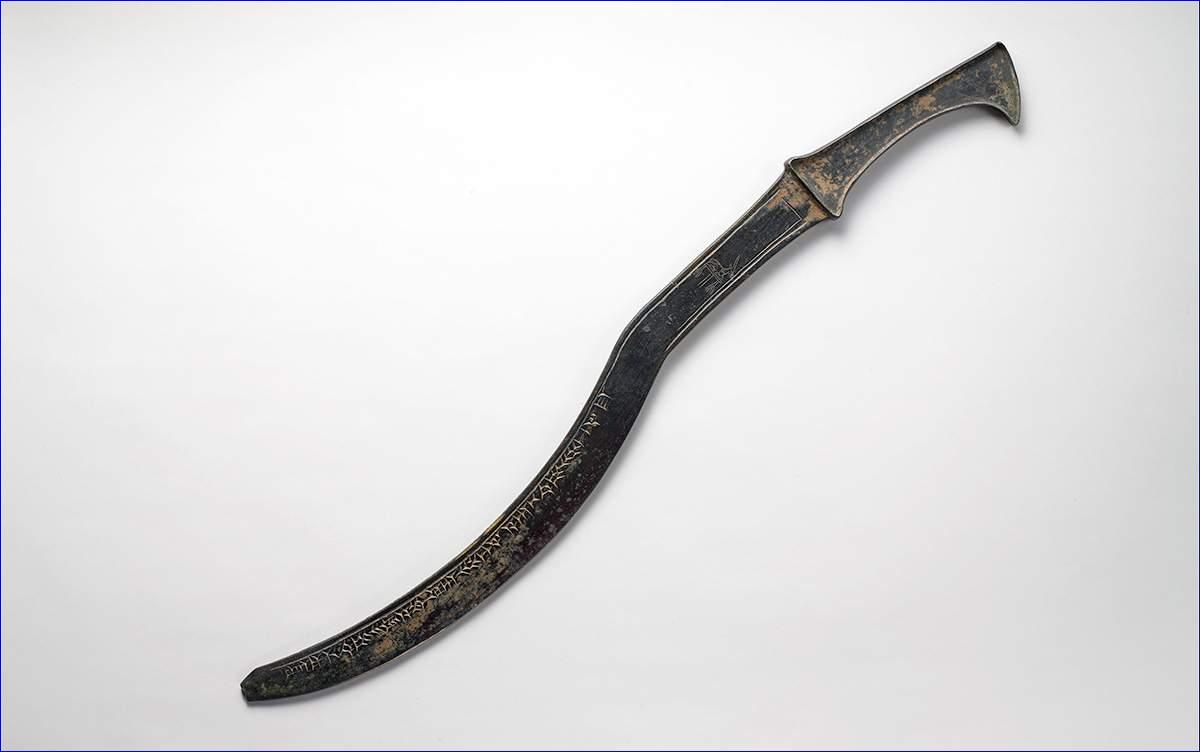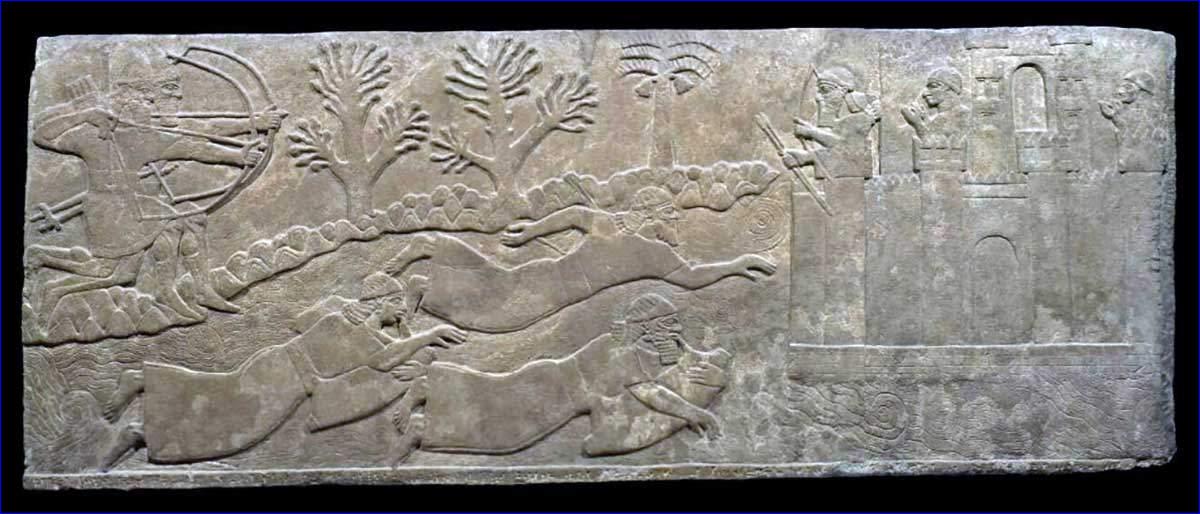


 Met Museum)
Met Museum)
The Bronze Age Near East
The Bronze Age cultures of the Near East were based in six geographical areas: Egypt, the Levant/Syria-Palestine, Anatolia, Mesopotamia, and the Eastern Mediterranean. The cultures and kingdoms of these geographic areas had limited contact with each other during the Early and Middle Bronze Ages, but ideas traveled along trade routes. Warfare remained relatively simple until new technological ideas began spreading across the region in the Middle Bronze Age (c. 2100-1550 BC). Inventions such as the wheel and horse domestication were used for non-military and military reasons, while kingdoms began consolidating greater geographic areas to become empires.
The Late Bronze Age System
By 1550 BC, a number of great states had formed in the Near East that had direct contact with each other. Modern scholars often refer to this Late Bronze Age (c. 1550-1200 BC) system as the "Great Powers Club," although the membership was fluid. Egypt, Kassite Babylon, Hatti (Hittites), and Mitanni were the early member states, with Alyshia (Cyprus) joining later and Assyria replacing Mitanni. The Anatolian state of Arzawa is occasionally considered a Great Power, and other non-member yet influential states included Minoan Crete, Mycenean Greece, and Elam. Modern scholars know about this system due to the wealth of written sources from the era that have been discovered.
Related: Assyrians: Frequently Asked Questions
More than 300 clay tablets written in the cuneiform script of the Akkadian language were discovered in the Egyptian city of Amarna in 1887. The tablets, now known as the Amarna Letters, consist of correspondence between the Great Powers and their vassal states. The majority of the vassal states were Canaanite city-states located in the Levant, which provided the major states with many benefits. The Levant was rich in resources such as timber and horses, but it also provided a buffer zone between the Hittites and the Egyptians. The Egyptians controlled the southern Levant while the Hittites ruled the north, usually using their Canaanite proxies to advance their objectives.

 British Museum)
British Museum)
The armies of the Late Bronze Age Near East used similar weapons and tactics, so a general overview is a good place to start. The chariot is perhaps the most visible and inspiring due to all the primary sources that reference it. Numerous ancient texts, artistic representations, and some extant pieces of chariots have helped modern scholars recreate these ancient war machines. With that said, the chariot's place in history is often misunderstood. Bronze Age armies did not use chariots because they were more effective or efficient than cavalry; in fact, the opposite is true. Chariot teams took up far more resources than cavalry, and a single horse is much more maneuverable than a chariot, but in terms of development, the chariot came first due to a few reasons. Horses of the Late Bronze Age were generally smaller and therefore not well-suited for cavalry. Also, innovations that made cavalry possible, such as saddles and stirrups, were not yet invented.
Related: Brief History of Assyrians
The Eurasian steppe was the birthplace of the wheel and the domestication of the horse, diffusing throughout Eurasia in the late Neolithic period. The Egyptians were the last people in the Near East to receive the chariot when the Hyksos brought it there in the seventeenth century BC. But the chariot was not the only weapon to become widely diffused in the Near East.
Composite Bows, Sickle Swords, and Armor
The composite bow is another weapon that likely originated on the Eurasian steppe before filtering through the Near East in the Bronze Age. It made its way to Egypt in the Late Bronze Age, where it became the standard weapon of the chariot corps. Another Bronze Age weapon that the Egyptians made famous was the sickle or khepesh sword. The one-handed hacking sword is often associated with the Egyptians but was used throughout the Near East by infantry forces. And as these advances in offensive weapons were made, the armies of the Near East also developed better armor. Most Late Bronze Age armor consisted of leather and/or bronze, which although not heavy like later armor, was enough to give a warrior a chance.
The Battle of Kadesh
The military conflict between the Hittites and Egyptians for control of the Levant began in the fifteenth century BC but became more heated in the thirteenth century. Before the thirteenth century, the Kingdom of Mitanni was also in the region but after it was destroyed in the mid-thirteenth century only the Hittites and Egyptians were left. The Hittite king, Muwatalli II (ruled c. 1295-1272 BC) expanded his empire from central Anatolia south into the Levant. Not to be outdone, the Egyptian king, Ramesses II "the Great" (ruled c. 1290-1224 BC) also took an aggressive stance toward the Levant. The two sides clashed in the fifth year of Ramesses's rule near a Canaanite city called Kadesh.
The Battle of Kadesh is the best documented battle prior to the Battle of Marathon and the earliest, detailed account of a battle. There are six Egyptian language versions of the battle inscribed on the walls of four Egyptian temples, which were later copied onto papyrus. Each of the temple inscriptions was accompanied by pictorial reliefs, which have helped modern scholars learn more about the nature of Late Bronze Age warfare.
The Hittite Army
When both forces met on a plain outside Kadesh, they had many of the same weapons but they utilized some different tactics. Both armies were personally led by their kings, which was common throughout the Near East in the Late Bronze Age. For both the Egyptians and the Hittites, the chariot corps was the base of their professional army, but the armies' chariots were slightly different. The axel on Hittite chariots was attached to the middle of the body rather than the rear, making them bigger and heavier than Egyptian chariots. The advantage was that Hittite chariots could carry three men: a driver, a shield bearer, and a spear thrower. Egyptian chariots could only carry a driver and a shield bearer, so the driver usually doubled as an archer.
Hittite infantry fought in a phalanx using long spears and daggers if the phalanx was broken. Although the bow was quite popular with Egyptian charioteers, only Hittite light infantry used bows and based on pictorial reliefs they never used composite bows. A final element of the Hittite army that played an important role at Kadesh were the Teher warriors. Teher warriors were the elite guard of Muwatalli, and presumably all Hittite kings, forming a protective ring around the king during battle.
The Egyptian Army
The smaller Egyptian chariots were quicker and more maneuverable, but they had less firepower. When the driver engaged the enemy, he would stop the chariot and shoot his bow as the shield bearer protected him. More accomplished charioteers, such as Ramesses II, or so he claimed, could drive and shoot simultaneously by tying the chariot reigns to a belt loop. Egyptian infantry, like their Hittite counterparts, were usually conscript commoners, but their preferred weapon was the khepesh sword.
Although the Teher were unique to the Hittites, the Egyptians also used elite soldiers. Ramesses's personal guards were members of the Shardana ethnic group, who were distinguished in pictorial representations by their long swords and horned helmets. After the battle began, the Egyptians also used a division of shock troops known as the Na'arn, who were either native Canaanites, Egyptian soldiers who lived in the Levant, or both.
The texts indicate the Egyptian army was divided into five divisions that were named after the most important New Kingdom gods: Ptah, Ra, Amun, and Seth. The Na'arn constituted a separate division. Modern scholars believe that each division had about 5,000 men, which would put the number at about 20,000 to 30,000 men. It is believed that the Hittite army was similarly divided with equivalent numbers, putting the total fighting in the battle at 40,000 to 60,000 men.
The Assyrians Enter the Scene
Both sides fought hard for a full day, possibly two, with the Hittites nearly capturing Ramesses. The Egyptian king was rescued by the Na'arn and the battle ended in a stalemate, but it had long-lasting geopolitical and military repercussions. Turmoil ensued in the land of Hatti after Muwatalli died when Hattusili III (ruled c. 1275-1275 BC) usurped Urhi-teshup (ruled c, 1882-1275 BC). Hattusili and Ramesses later signed a treaty, but a new military threat challenged empires from the southeast.
The Assyrians were latecomers to the Bronze Age Great Powers system, but a proficiency in Bronze Age military techniques, and some new ones, allowed them to become masters of the Near East. The Assyrian dynasty that came to power in the Late Bronze Age is often referred to by modern scholars as the "Neo-Assyrian Empire." Assyrian King Ashur-ubalit (ruled c. 1363-1328 BC) began the process by taking Mitanni land, replacing that kingdom in the Great Powers Club. Shalmaneser I (ruled c. 1272-1244 BC) finished the Mitanni off for good, leaving the Assyrians neighbors with the Hittites and Babylonians. The Assyrians accomplished this feat through a military structure that incorporated the best ideas of the Bronze Age with those of the Iron Age.
The Neo-Assyrian War Machine
It is important to know that the Neo-Assyrian Empire was based on a martial philosophy that pervaded all aspects of Assyrian culture. All adult Assyrian males were subject to conscription and standing armies became the norm by the Late Bronze Age. As with the Egyptians and Hittites, Assyrian kings personally led their armies in battle, but the Assyrian government was much more militarized. All state offices were military posts and even the palace art glorified warfare and the Assyrian army. By the time the Bronze Age collapsed around 1200 BC, the Assyrians were poised to bring their military juggernaut into the Iron Age.
The Assyrians quickly replaced bronze weapons with iron ones and chariots for cavalry, but perhaps their most amazing innovation was siege weapons. Some simple siege weapons were used in the Bronze Age, but the Assyrians brought them to a whole new scientific level. Wheeled siege weapons, towers, and battering rams were all used by the Assyrians, as evidenced by pictorial reliefs discovered in the Assyrian cities. The Assyrians also introduced new battlefield tactics in the Late Bronze and early Iron Ages.
The Assyrian army used swarming techniques and plenty of terror when approaching enemy territory. If a city showed any sign of resistance, the Assyrians tortured, raped, beheaded, and flayed a good share of the inhabitants. And if this was not grizzly enough, they would then hang the corpses from the walls and gates of the cities as a warning. The Assyrians would also forcibly remove recalcitrant populations to other parts of their empire. One study suggests that approximately 4.5 million people suffered this fate in the last three centuries of the Assyrian Empire (tenth through seventh centuries BC).

or register to post a comment.